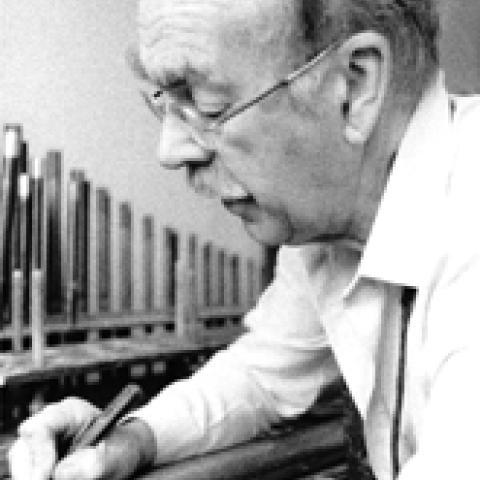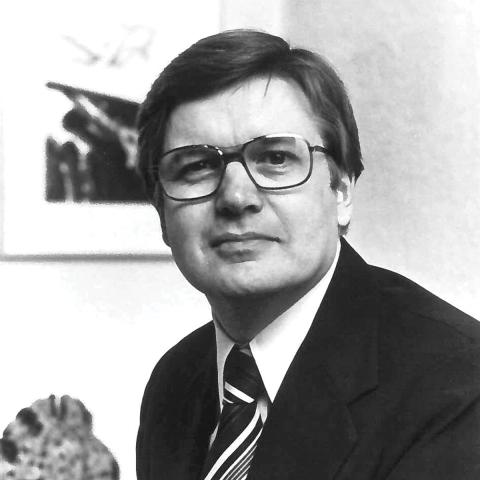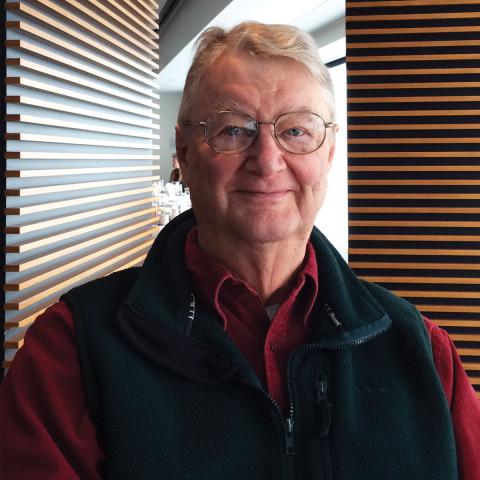
Nunc Dimittis
Donald A. Grooms, 78, died May 7, following complications caused by a stroke. Born in Paris, Texas, he was an honor graduate of Paris High School. During his high school and college years, he served as organist for several churches. He studied organ under Helen Hewitt at North Texas State University. In 1965, he graduated from the University of Texas Southwestern Medical School, and in 1971, he was elected a Fellow to the American Academy of Pediatrics.
Dr. Grooms served as a Major in the Army, attached to the 25th Evacuation Hospital, Da Nang, Vietnam, after which he relocated to New York City where he was associated with the international division of Pfizer Pharmaceuticals for 20 years. Following his retirement from Pfizer, Dr. Grooms became a partner in Petty-Madden Organ Builders, a position he held well into his seventies.
Fr. Columba Kelly, OSB, 87, a monk and priest of St. Meinrad Archabbey, St. Meinrad, Indiana, died on June 9 at the monastery. He was a jubilarian both of profession and priesthood. Born in Williamsburg, Iowa, on October 30, 1930, he was given the name John Joseph at his baptism. He attended St. Ambrose College, Davenport, Iowa, for several years before transferring to St. Meinrad College. Invested as a novice monk on July 30, 1952, he professed simple vows on July 31, 1953, and his solemn vows on August 6, 1956. Fr. Columba completed his theological studies in Rome and was ordained to the priesthood on July 5, 1958. The following year, he received a licentiate in sacred theology from the Pontifical Athenaeum Sant’ Anselmo. He then pursued graduate studies, earning his doctorate in church music at Rome’s Musica Sacra in 1963. He studied semiological interpretation of chant under Dom Eugène Cardine, OSB, monk of the Abbey of Saint-Pierre in Solesmes.
When Fr. Columba returned to Saint Meinrad in 1964, he was named choirmaster of the monastic community and began to teach in both the College and the School of Theology. His lasting contribution was to introduce chant in English into the celebrations of the Divine Office and the Eucharist. The monastery’s collection of his chant compositions numbers nearly 2,000.
In addition to his many years teaching at Saint Meinrad, he taught courses on liturgical music for 12 summers at St. Joseph’s College, Rensselaer, Indiana. Other summer teaching assignments included University of Wisconsin, Madison, and California State University-Los Angeles. Through his many workshops to parishes and religious communities, and through the collections of his antiphons published by GIA and Oregon Catholic Press, his work is known by many cantors, choirs, and parish communities throughout the United States.
Fr. Columba was a charter member of the Benedictine Musicians of the Americas, a member of the American Musicological Society, the American Guild of Organists, the National Catholic Music Educators Association, the Church Music Association of America, and the Composers’ Forum for Catholic Worship. He was also a standing member of the Chant Division of the National Pastoral Musicians Association. In 2015, he was named the second recipient of the Spiritus Liturgiae Award, given by the Liturgical Institute in Mundelein, Illinois.
In addition to his music scores, Fr. Columba contributed to the literature on chant and sacred music. These include his 2003 book, Gregorian Chant Intonations and the Role of Rhetoric; “The Organ,” an article in a book sponsored by the National Liturgical Conference and the Church Music Association; and, in 2006, his translation of and notes to the first volume of Agustoni and Göschl’s An Introduction to the Interpretation of Gregorian Chant. Fr. Columba also contributed entries on the Kyrie, Gloria, Agnus Dei, Benedicamus Domino, and Ite Missa Est for the New Catholic Encyclopedia.
The funeral Mass for Fr. Columba Kelly was celebrated June 13. Burial followed in the Archabbey Cemetery.
Henry Willis, IV, the last living family member of the Henry Willis & Sons organbuilding dynasty, died at a hospital near his home in India on June 23, at the age of 91. Willis was born January 19, 1927, to Henry Willis, III and Clara Constance (Sinclair) Willis at Streatham Hill, London. Educated at Gladstone Preparatory School, London, Westminster School, London, and Giggleswick School, North Yorkshire, he left school in 1944 to join the Royal Army during World War II. He was promoted to Lance Corporal in 1945 and commissioned to the Queen’s Royal Regiment in 1946, where he was placed in charge of a Japanese prisoner of war camp and the repatriation of British prisoners.
Willis joined the family organbuilding firm in 1948 as a laborer (at the insistence of his father) and then trained as a pipemaker and voicer under George Deeks. He was sent to manage the Liverpool Branch in 1954, principally to oversee the restoration of the great 1855 Willis concert organ in St. George’s Hall, which had been severely damaged by wartime bombing, theft, and general mishandling. He returned to London to manage the Head Office in 1965 due to his father’s worsening health. Following Henry Willis, III’s death on February 27, 1966, he began the search for property to construct a purpose-built organ factory in Petersfield, where he opened a shop in 1968 on land that had been the site of old dairy buildings.
Willis was invited to attend, and became one of the founding members of, the American Institute of Organbuilders at its first annual convention in 1974, thereby beginning a relationship with his American organbuilding colleagues. A frequent attendee and lecturer at subsequent conventions, his last appearance was in Washington, D.C., in 1993, where he lectured on and demonstrated organ pipemaking and voicing. His acerbic wit and entertaining style covered quite a bit of useful information to those who “listened between the lines” during those lectures and demonstrations. His wife, Barbara, was a charming lady who did her best to keep Willis as well-behaved as possible, especially during times set aside for evening socializing!
In 1997 Willis stood down as Managing Director of Henry Willis and Sons. New management and new ownership relocated the firm to the Liverpool Branch in 2001 where the firm now survives him. He was a Freeman of the City of London and served as Master of The Worshipful Company of Musicians, of which he was the longest holder of the Livery.
Henry and Barbara Willis moved to India in 2008 where his mother’s family had been coffee planters in the 19th and 20th centuries. They purchased land and built a house there, in which he and Barbara have lived up to the present. He died peacefully at home in the Nilgris District of Tamil Nadu.
—John-Paul Buzard






